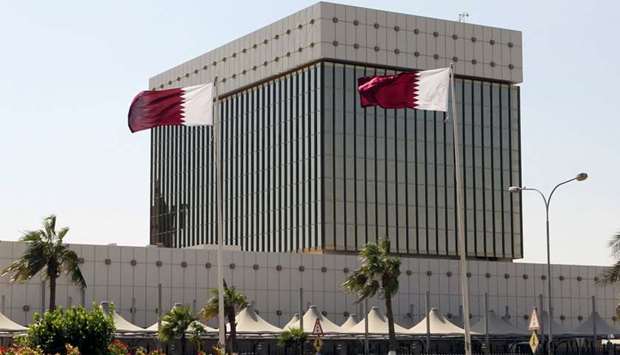In a clear indication of Qatar’s improving international investment position, the Qatar Central Bank’s foreign exchange reserves increased to $37.7bn in January, QNB has said in its “Qatar Monthly Monitor’.
In December, Qatar’s forex reserves stood at $37.6bn, the report said.
The report showed Qatar’s current account surplus widened to 5.3% of GDP in the third quarter (Q3) from 2.5% in the second quarter (Q2) while the deficit in the financial account narrowed.
The fiscal deficit widened in Q3 to 6.9% of GDP from 4.1% in Q2 of 2017.
The country’s exports expanded 28.8% year-on-year (y-o-y) on higher hydrocarbon prices while import growth remained steady at 2% y-o-y.
The country’s banking sector also grew in terms of deposits and loans as well as assets in December.
Banking assets expanded to $375.5bn growing 9.1% y-o-y in January from 8% in December. Bank deposit growth was 9.1% y-o-y in January.
Credit growth was 8.5% in January, driven by lending to the public sector, which grew 16.1% y-o-y.
Deposits from the non-resident and private sector remained stable in January, QNB noted.
Broad money supply (M2) grew by 19.6% in January compared to 21.3% in December.
The overnight interbank rate rose to 2.18% while the three-month interbank rate declined to 2.54% in January from 2.75% in December last year.
Brent crude prices fell to $65.8 for a barrel in February from $69.1 in January, QNB said and noted Qatar’s oil production slowed to 612,000 bpd in December last year from 615,000 bpd in November 2017.
If oil price stays above $60, Qatar will generate a surplus as the budget for the current fiscal (2018) has taken $45 as the conservative oil price estimate.
In terms of Qatar's economic activities, QNB said the real GDP picked up in Q3 mainly due to a recovery in the hydrocarbon sector.
Non-hydrocarbon real GDP growth remained broadly flat in Q3.
Inflation slowed was 0.8% in February y-o-y as falling rents have stabilised in recent months.
Industrial production surged to 7.4% y-o-y growth in Q3 on a rebound in the mining sector mainly due to less maintenance on LNG trains.
The property sector has strengthened based on the latest data – the real estate price index rose 1.8% in December and falling rents have stabilised in recent months.
The report showed 5-star and 4-star hotel occupancy rates in the country remained steady at 56% and 59% respectively in January.
Qatar’s population grew 1.0% y-o-y, reaching 2.7mn in February; women made up close to 25% of the population, QNB said.
The report showed Qatar’s current account surplus widened to 5.3% of GDP in the third quarter (Q3) from 2.5% in the second quarter (Q2) while the deficit in the financial account narrowed.
The fiscal deficit widened in Q3 to 6.9% of GDP from 4.1% in Q2 of 2017.
The country’s exports expanded 28.8% year-on-year (y-o-y) on higher hydrocarbon prices while import growth remained steady at 2% y-o-y.
The country’s banking sector also grew in terms of deposits and loans as well as assets in December.
Banking assets expanded to $375.5bn growing 9.1% y-o-y in January from 8% in December. Bank deposit growth was 9.1% y-o-y in January.
Credit growth was 8.5% in January, driven by lending to the public sector, which grew 16.1% y-o-y.
Deposits from the non-resident and private sector remained stable in January, QNB noted.
Broad money supply (M2) grew by 19.6% in January compared to 21.3% in December.
The overnight interbank rate rose to 2.18% while the three-month interbank rate declined to 2.54% in January from 2.75% in December last year.
Brent crude prices fell to $65.8 for a barrel in February from $69.1 in January, QNB said and noted Qatar’s oil production slowed to 612,000 bpd in December last year from 615,000 bpd in November 2017.
If oil price stays above $60, Qatar will generate a surplus as the budget for the current fiscal (2018) has taken $45 as the conservative oil price estimate.
In terms of Qatar's economic activities, QNB said the real GDP picked up in Q3 mainly due to a recovery in the hydrocarbon sector.
Non-hydrocarbon real GDP growth remained broadly flat in Q3.
Inflation slowed was 0.8% in February y-o-y as falling rents have stabilised in recent months.
Industrial production surged to 7.4% y-o-y growth in Q3 on a rebound in the mining sector mainly due to less maintenance on LNG trains.
The property sector has strengthened based on the latest data – the real estate price index rose 1.8% in December and falling rents have stabilised in recent months.
The report showed 5-star and 4-star hotel occupancy rates in the country remained steady at 56% and 59% respectively in January.
Qatar’s population grew 1.0% y-o-y, reaching 2.7mn in February; women made up close to 25% of the population, QNB said.


